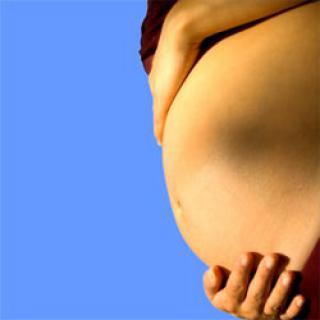Nutrition During Pregnancy
Published on 16 March 2011 in Food, health and wellbeing

Introduction
During development, the fetus is entirely dependent on its mother for its nutrition. It is clear, therefore, that maternal nutrition during pregnancy will have a big effect on outcome. What is not so obvious is that sub-optimal nutrition during pregnancy can have long, as well as short, term consequences.
In this brief review, we examine data from animal and human research testing the idea that poor nutrition during pregnancy increases the risk of obesity, high blood pressure and type 2 diabetes in the adult offspring. We consider whether there is anything that can be done to reduce the risk and whether and how policy makers need to take these factors into account.
Key Points
- Women need to ensure that they have an optimal diet during pregnancy.
- This is especially true in relation to micronutrient intake.
- Recommendations need to consider not only calories and macronutrients, but also micronutrients.
- Policy makers should consider the long term effect of nutrients, and take these into account when considering recommendations such as levels of intake during pregnancy.
Research Undertaken
In this review, we examine results taken from both animal and human research. The idea that nutrition during pregnancy can have long term effects was most clearly enunciated in papers by David Barker and Nick Hales, from Southampton and Cambridge respectively. In the first series of paper, Barker’s group examined the effect of birthweight on health and wellbeing in males aged 70 years plus from Hertfordshire. They showed a very clear interaction. Smaller babies, even within the normal range, had a greatly increased risk of hypertension (high blood pressure) than those who were born larger. At the extremes, very large or very small babies, this relationship did not hold so well.
There are many other studies showing the same effect.In 1944, Dutch railwaymen went on strike, to make life difficult for the occupying German forces. The German authorities retaliated by banning food transport. The ban was lifted in November, but the winter was so severe that transport was affected and the “Dutch Hunger Winter” resulted. The famine lasted about three months before the authorities relented and restored rations to normal. However, the winter was severe, and women who were pregnant during this time gave birth to babies who had different problems as adults, depending on the stage of gestation they were in at the start of the three month period. Those who were at an early stage of pregnancy gave birth to children who had the most serious problems. There is an increase in glucose intolerance, atherogenic lipid profile (increased risk of atherosclerosis) and other risk indicators in these children as adults. Respiratory disease is most common in those who were midway through gestation during the starvation period, which makes sense, since this is the period when the airways develop, and compromising their nutrition could easily affect how they grow. Results from other sieges, such as the Leningrad siege and some Chinese results, modify the conclusions, suggesting post-natal catch up growth may actually be a bad thing!
Other examples include the Nauran Islanders, who had a very restricted diet during the Second World War. After the war, they suffered a much increased incidence of Type 2 diabetes. The explanation appears to relate to their nutrition. Mining companies came to the Islands after the war, and brought a marked increase in affluence and hence improved nutrition. Babies who were in utero during the poor nutrition period coped very badly with the improved nutrition. In contrast, those who were in the womb after the period of good nutrition, in other words had no change in their nutritional environment during or after pregnancy, had no problems.There are many other studies showing the same results, and they have given rise to the “thrifty phenotype” and predictive adaptive” hypotheses. Simply put, these state that a baby prepares for the environment it thinks it is going to encounter postnatally. If it finds a different one, then problems arise.
Animal models showed that many different sub-optimal diets during pregnancy had a very similar effect on the offspring. The babies had high blood pressure, became obese and had an increased risk of diabetes as adults. Our own work concentrates on the effect of iron deficiency, since this is a common problem, but others have shown that a low protein diet, a high fat one, or one deficient in zinc or copper can all have the same effect. We are concentrating on trying to find out why, so that it may be possible to reverse the effect. Interestingly, comparisons between two different diets, in work supported by BBSRC and Scottish Government, suggest that different dietary problems may result in effects on the same genes and gene pathways; a phenomenon we are terming the “gatekeeper” effect. This may be very important, since it implies that an ameliorations strategy may be possible irrespective of the cause.
Policy Implications
The implications for these results are significant. We know that Scotland has a very poor diet, and that this has real consequences for the health of our nation. However, if we improve the diet, then these results might predict that those babies in utero during the period of poor diet, subsequently having a good diet, might do worse than those in utero once the diet is improved. It is feasible, therefore, that there could actually be a worsening of health prior to the improvement that we hope to see as an outcome of improved nutrition. This is certainly counter-intuitive and is a disconcerting possibility; one that needs to be looked at very carefully.
These results are currently being considered by the Scientific Advisory Committee on Nutrition for the UK Government. They will be issuing a document in the near future, looking at the implications and what it might mean for policy recommendations.
Author
Professor Harry McArdle H.McArdle@abdn.ac.uk







